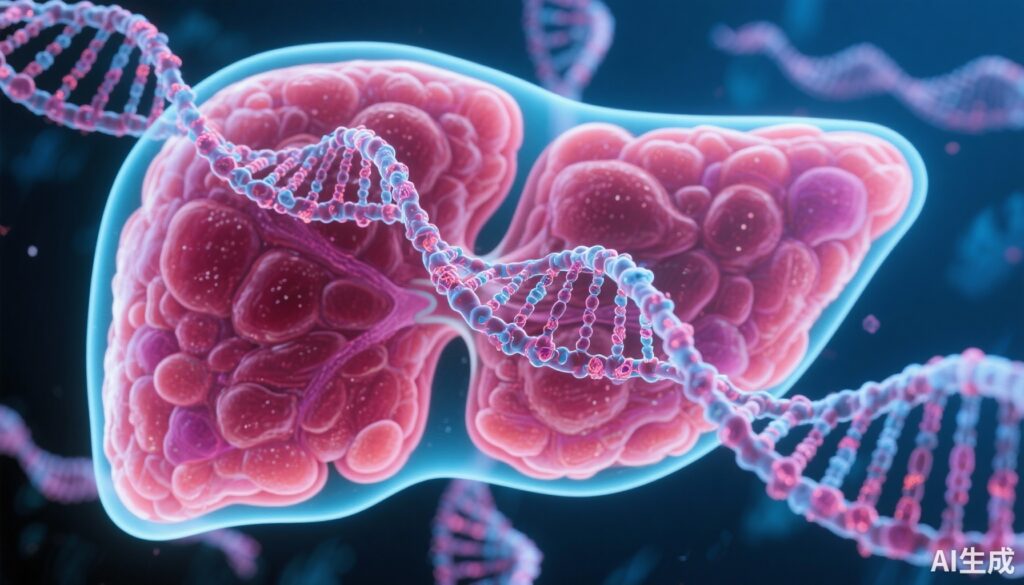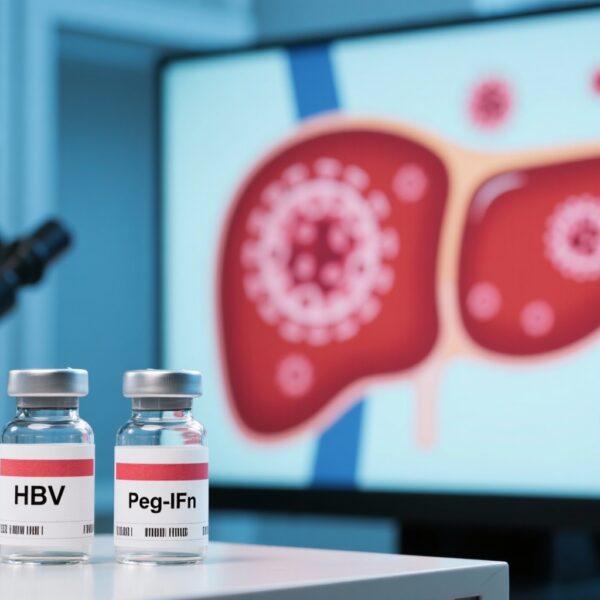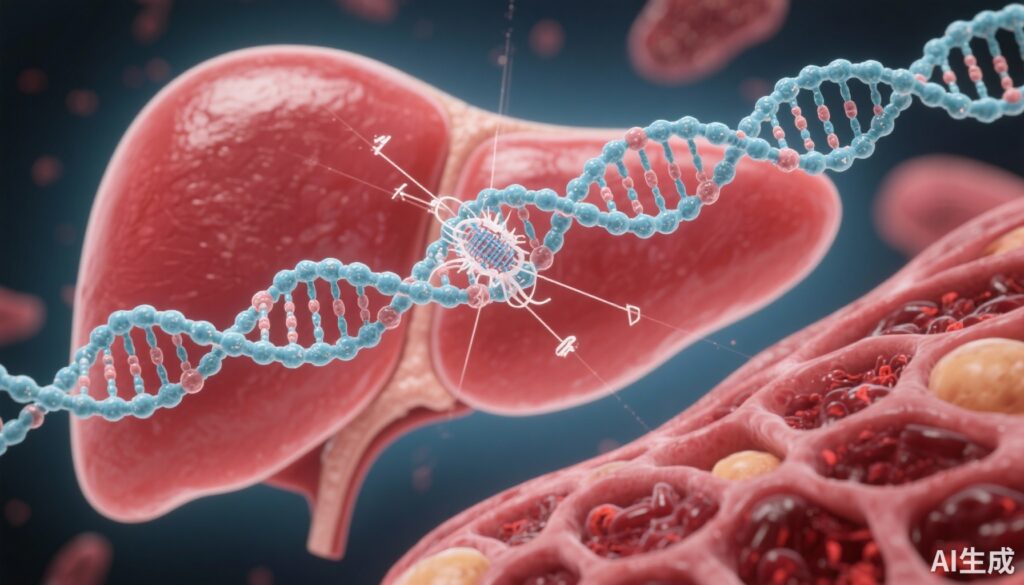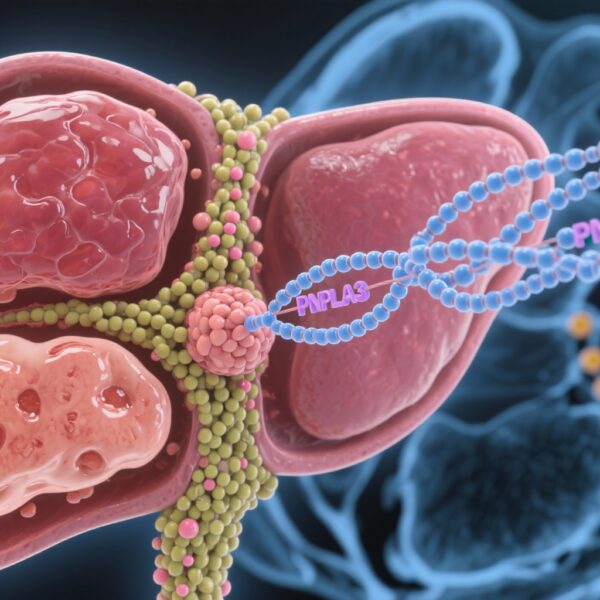Highlight
- Rapirosiran is an investigational small-interfering RNA targeting liver-expressed HSD17B13 mRNA to treat MASH.
- Phase I trial showed rapirosiran was well tolerated with no serious treatment-related adverse events.
- Rapirosiran induced a dose-dependent reduction in hepatic HSD17B13 mRNA, reaching a median reduction of 78% at six months with the highest dose.
- This novel RNA interference therapeutic represents a potential new treatment avenue for MASH, which currently has limited pharmacological options.
Study Background and Disease Burden
Metabolic dysfunction-associated steatohepatitis (MASH), formerly known as nonalcoholic steatohepatitis (NASH), is a progressive liver disease characterized by hepatic steatosis, inflammation, and varying degrees of fibrosis. It poses a significant health burden globally due to its high prevalence linked to obesity and metabolic syndrome. MASH is a leading cause of liver-related morbidity and mortality, including cirrhosis and hepatocellular carcinoma, and currently lacks widely approved pharmacological therapies, with lifestyle modification remaining the mainstay.
Genetic factors modulate the risk and progression of chronic liver diseases. Genome-wide association studies identified loss-of-function variants in the hydroxysteroid 17-beta dehydrogenase 13 gene (HSD17B13) as protective against chronic liver disease, including MASH. HSD17B13 encodes a liver-specific enzyme involved in lipid metabolism and retinol dehydrogenase activities, implicating it in the pathogenesis of fatty liver disease. Therapeutically targeting HSD17B13 by reducing its hepatic expression offers a novel strategy for MASH treatment.
Study Design
The ALN-HSD-001 study was a randomized, double-blind, placebo-controlled, multicenter phase I trial designed to evaluate the safety, tolerability, pharmacokinetics (PK), and pharmacodynamics (PD) of rapirosiran, an N-acetylgalactosamine-conjugated small-interfering RNA (siRNA) targeting HSD17B13 mRNA.
The study was conducted in two parts:
– Part A involved 58 healthy adult volunteers who received single ascending subcutaneous doses of rapirosiran or placebo to characterize safety and PK profile.
– Part B enrolled 46 adults diagnosed with MASH. Participants received two doses of rapirosiran or placebo administered 12 weeks apart. All MASH patients underwent liver biopsies at screening and post-randomization for quantitative measurement of hepatic HSD17B13 mRNA expression, allowing direct assessment of target engagement.
The primary endpoint was the frequency and severity of adverse events (AEs). Secondary endpoints included plasma and urinary pharmacokinetics and the change from baseline in liver HSD17B13 mRNA expression.
Key Findings
Safety and Tolerability:
– In Part A (healthy adults), injection-site reactions were the only adverse events occurring in ≥10% of rapirosiran-treated individuals (11%). These reactions were mild and transient.
– No serious treatment-related adverse events (SAEs) occurred during the study.
– In Part B (MASH patients), the only AE reported in ≥10% of rapirosiran-treated subjects was COVID-19 infection (14%), which was unrelated to the study drug.
– Importantly, no drug-induced liver injury was detected in either part.
Pharmacokinetics:
– Rapirosiran plasma concentrations declined rapidly within 24 hours post-dose, consistent with expected siRNA pharmacokinetics.
– Renal excretion accounted for 17%-37% of rapirosiran clearance across doses.
Pharmacodynamics and Efficacy:
– In MASH patients, rapirosiran demonstrated a clear dose-dependent reduction in liver HSD17B13 mRNA expression.
– The highest dose group (400 mg) exhibited a median reduction of 78% in liver HSD17B13 mRNA expression at six months post-treatment initiation.
– This robust hepatic target engagement supports the hypothesized mechanism of action.
Expert Commentary
This first-in-human trial of rapirosiran highlights the therapeutic potential of RNA interference in modulating key pathogenic drivers of MASH. The favorable safety profile is reassuring, especially in a population with underlying liver pathology where drug-induced liver injury is a concern. The substantial reduction of hepatic HSD17B13 mRNA validates effective delivery of the siRNA to the liver and successful gene silencing.
Loss-of-function genetic variants in HSD17B13 have been associated with protection from progressing chronic liver disease, suggesting reduced enzyme activity as beneficial. Rapirosiran’s pharmacodynamics reflect this protective mechanism by directly lowering hepatic HSD17B13 expression. This gene-targeted therapeutic approach is innovative compared to prior metabolic or inflammatory modulators tested in MASH.
Limitations of this phase I study include the small sample sizes and short-term follow-up, which preclude assessment of long-term clinical outcomes such as liver histology improvement or fibrosis regression. While liver biopsy confirmation of mRNA knockdown is a strength, clinical relevance will ultimately depend on demonstration of meaningful disease modification in future larger, longer studies.
Conclusion
Rapirosiran, a novel N-acetylgalactosamine-conjugated siRNA therapeutic targeting HSD17B13, demonstrates encouraging safety, tolerability, and pharmacokinetics in healthy and MASH populations. Its robust, dose-dependent hepatic mRNA knockdown confirms targeted delivery and gene silencing. This study lays the groundwork for continued clinical development of rapirosiran aiming to address the significant unmet need for effective pharmacotherapy in MASH, a disease with limited approved treatment options.
Ongoing and future studies should evaluate the clinical efficacy, optimal dosing regimen, and long-term safety to determine whether modulation of HSD17B13 can alter disease progression and improve patient outcomes in MASH.
References
Sanyal AJ, Taubel J, Badri P, Bond S, Makarova N, Zhao W, Duggal S, Kajbaf F, Olenchock BA, Gansner JM. Phase I randomized double-blind study of an RNA interference therapeutic targeting HSD17B13 for metabolic dysfunction-associated steatohepatitis. J Hepatol. 2025 Oct;83(4):838-848. doi: 10.1016/j.jhep.2025.05.031. Epub 2025 Jun 27. PMID: 40581300.
Younossi ZM, et al. Global epidemiology of nonalcoholic fatty liver disease—Meta-analytic assessment of prevalence, incidence, and outcomes. Hepatology. 2016 Jul;64(1):73-84.
Manns MP, et al. Non-alcoholic steatohepatitis: a global health problem. J Hepatol. 2016 Sep; 65(3): 479-491.
Musso G, et al. Genetic and epigenetic factors in the pathogenesis of metabolic-associated fatty liver disease. Nat Rev Gastroenterol Hepatol. 2023 Jun;20(6):402-414.
Emerging Therapies for NASH: Mechanisms and Clinical Trials. Lancet Gastroenterol Hepatol. 2023 Jan;8(1):27-38.










